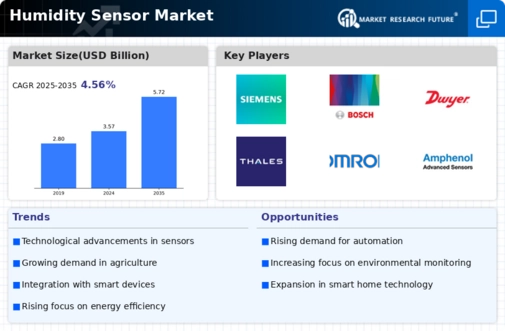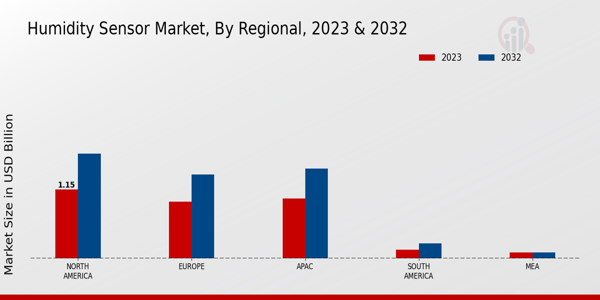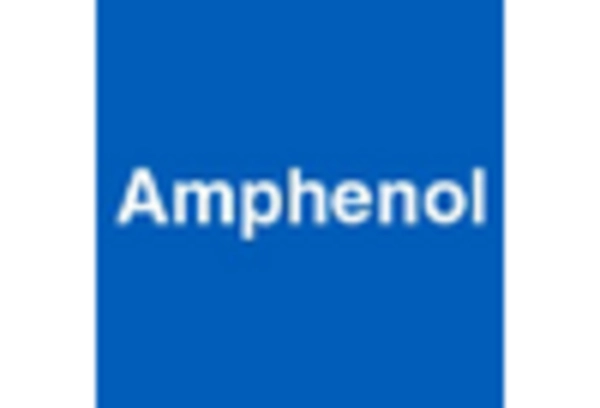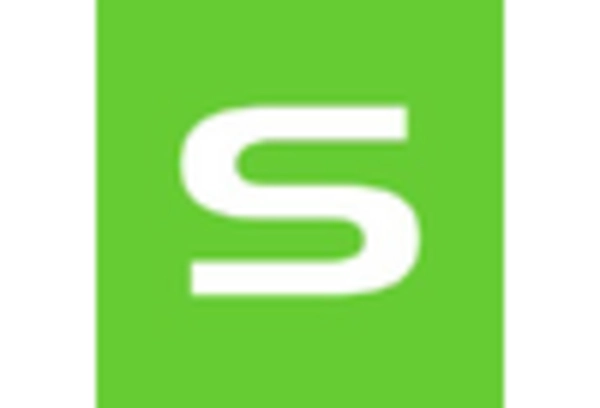Advancements in Sensor Technology
Advancements in sensor technology are likely to play a pivotal role in the Humidity Sensor Market. Innovations such as miniaturization, improved accuracy, and enhanced sensitivity are making humidity sensors more effective and versatile. These technological improvements may lead to the development of sensors that can operate in a wider range of conditions, thereby expanding their applicability across various sectors, including HVAC, agriculture, and industrial processes. Market data suggests that the demand for high-performance sensors is on the rise, as industries seek to optimize operations and reduce costs. This trend indicates a robust future for humidity sensors, as technology continues to evolve and meet the needs of diverse applications.
Increasing Demand in HVAC Systems
The increasing demand for humidity sensors in HVAC systems appears to be a significant driver in the Humidity Sensor Market. As climate control becomes a priority in both residential and commercial buildings, the need for accurate humidity measurement and control is likely to grow. HVAC systems equipped with advanced humidity sensors can enhance energy efficiency and improve occupant comfort. Market analysis indicates that the HVAC sector is expanding, with a notable emphasis on integrating smart technologies. This trend suggests that humidity sensors will play a crucial role in optimizing HVAC performance, thereby contributing to the overall growth of the humidity sensor market.
Rising Applications in Agriculture
Rising applications of humidity sensors in agriculture seem to be a key factor influencing the Humidity Sensor Market. As precision agriculture gains traction, the need for accurate environmental monitoring becomes increasingly critical. Humidity sensors are essential for optimizing irrigation practices, ensuring crop health, and maximizing yield. Data indicates that the agricultural sector is increasingly adopting technology to enhance productivity, which may drive the demand for humidity sensors. This trend suggests that as farmers seek to implement data-driven solutions, the market for humidity sensors will likely expand, reflecting the growing importance of environmental monitoring in agricultural practices.
Integration with Smart Home Systems
The integration of humidity sensors with smart home systems appears to be a driving force in the Humidity Sensor Market. As consumers increasingly seek automation and convenience, the demand for humidity sensors that can seamlessly connect with smart home devices is likely to rise. This integration allows for real-time monitoring and control of indoor environments, enhancing comfort and energy efficiency. According to recent data, the smart home market is projected to grow significantly, which may further bolster the adoption of humidity sensors. The ability to manage humidity levels through mobile applications or voice-activated devices indicates a shift towards more sophisticated home management solutions, thereby expanding the market for humidity sensors.
Growing Awareness of Indoor Air Quality
There is a growing awareness of indoor air quality, which seems to be influencing the Humidity Sensor Market. As individuals become more conscious of the health implications associated with poor air quality, the demand for humidity sensors that can monitor and regulate indoor humidity levels is likely to increase. Research indicates that maintaining optimal humidity levels can reduce the risk of respiratory issues and enhance overall well-being. Consequently, this heightened awareness may drive both residential and commercial sectors to invest in humidity sensors. The trend towards healthier living environments suggests a promising outlook for the humidity sensor market, as consumers prioritize air quality in their purchasing decisions.

















Leave a Comment